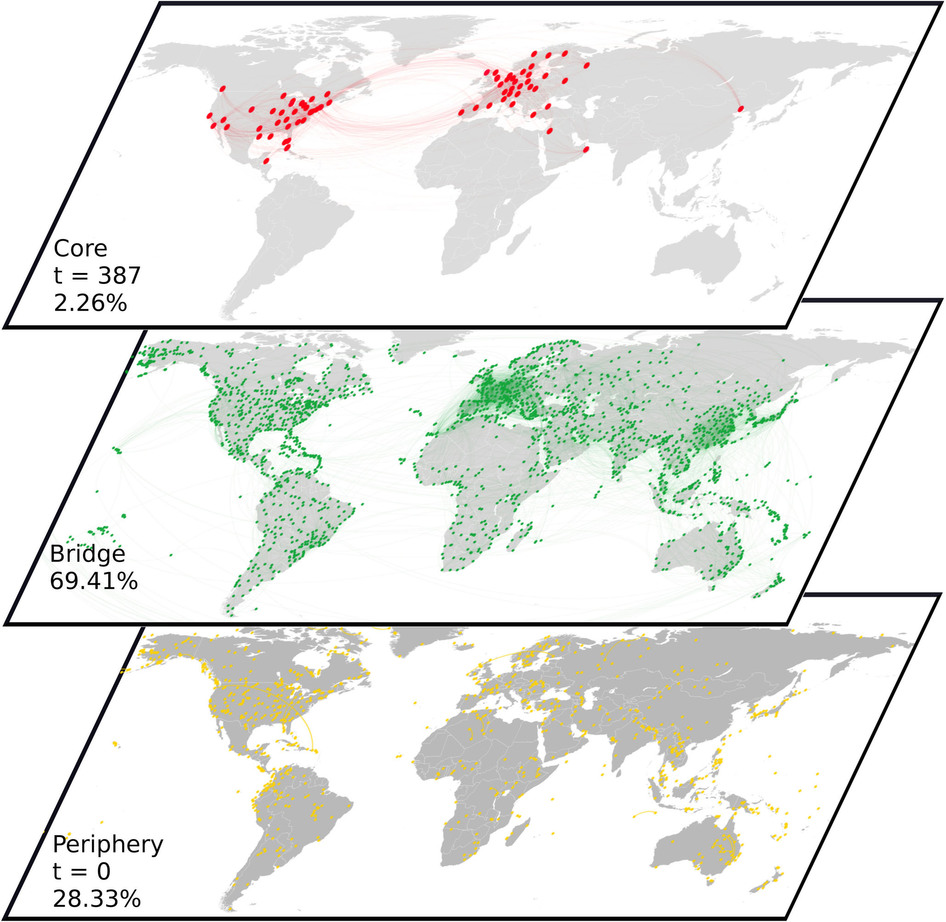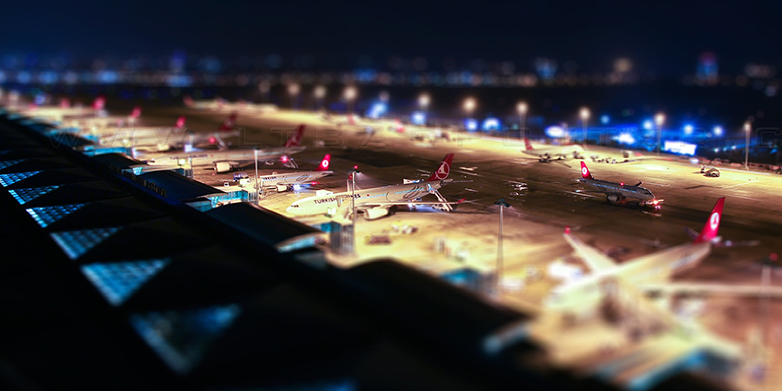Vulnerable and unstable periphery
ETH researchers have analysed global air connections and found a dense network that starts to fray at the edges. This makes the regions on the periphery vulnerable to disruption, which in turn makes the entire network vulnerable as many regions are at risk of getting completely cut off from the rest of the world.
It’s summertime, tourist season, and many people are flying away on holiday. The number of potential destinations has become almost endless, with air connections spanning the globe like a spider’s web. However, it is by no means guaranteed that passengers will get there and back on time – if at all. Like back in spring 2010, when many European airports were forced to close after the Eyjafjallajökull volcano erupted in Iceland: 60% of European flights were cancelled, hundreds of thousands of passengers were stranded at airports and the airlines suffered huge financial losses.
How stable is the world airline network?
For Trivik Verma, a PhD student in the Computational Physics for Engineering Materials group, this flight disruption provided a good reason to study the global route network in more detail. “Two of my co-authors were affected by the those cancellations,” he says. According to Verma, this was an incentive to find out just how well the world airline network can withstand such disruptions.
They analysed the 18,000 flight routes between the world’s 3,237 airports. Within the world airline network, each airport is directly or indirectly connected to other airports, with major hubs offering better links than other destinations. The researchers ‘deconstructed’ the airline network using a mathematical procedure, starting with the airports that have the weakest connection to the network (i.e. just one link). In the next step, the program removed the links to airports with a maximum of one triangle, such as when airport A is connected to airport B, but destination B can also be reached via airport C. The more triangles an airport is part of, the better its connection to the world airline network, as this provides alternate routes for passengers if the original connection fails.
A core of just 73 airports
Each subsequent calculation step raised the required number of triangles by one and ‘closed’ the airports that fell short. This process of elimination allowed the researchers to identify the busiest hubs in the world airline network, a group of just 73 airports that have at least 387 triangular connections to other airports. These core airports include giants such as Heathrow, Los Angeles, Dubai and Frankfurt.

A simulation in which the researchers removed 40% of the core connections – with heavy passenger traffic – demonstrated the core airports’ extraordinary stability: three quarters of the world’s airports still remained connected to one another. However, the consequences would be much graver if the same proportion of peripheral connections were closed, in which case only a quarter of all airports would remain networked. “This suggests that the core of the world airline network is extremely resistant to disruption,” says Verma, “and that the global network is a two-tier society connected via a bridge.”
Star-shaped peripheral hubs are unstable
This instability stems from how air connections are structured in the periphery: important regional airports connect other destinations in a star-like structure. As a result, they are connected to a regional hub through only one line, not through a triangle. Tampa Bay airport in Florida is a hub like this: its 24 destinations are arranged in a star shape. If the airport were to close, passengers would no longer be able to travel to these destinations by air, thus cutting off entire regions from the global network in a single blow.
However, what initially may sound like a problem concerning only peripheral regions would also have an impact on the core. In most of the closure scenarios for peripheral airports, those with just one connection made the whole network unstable.
Market economy promotes structure
“The two-tier structure of the world airline network is not only a result of our model but a consequence of the fact that airlines are profit-oriented,” says Verma. Airlines offer many connections only in areas with high passenger volumes or economic significance as well as short flying times. Flying time can be minimised when airlines operate within a dense network that allows them to fly direct to any destination from their domestic airport. This promotes the development of core airports with multiple connections. However, for economic reasons, the only option on the periphery is a star-shaped network with a central hub.
“The networked arrangement of airports ensures a high level of resistance against disruptions. Airports with no alternative connections to their destinations are precisely those that make the world airline network most vulnerable,” says Verma. The network is geared towards profit, not overall passenger convenience, he believes.
Further reading
Verma T, Araújo NAM, Herrmann HJ: Revealing the structure of the world airline network. Scientific Reports 2014, 4, 5638. doi:external page10.1038/srep05638call_made

